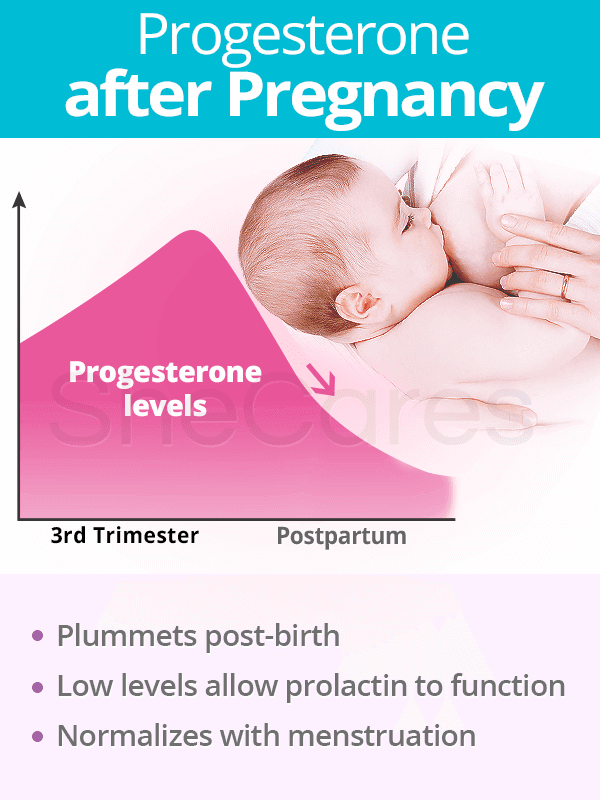The effects of progesterone begin even before pregnancy as progesterone and fertility go hand in hand. Without the reproductive hormone, conception would never occur, and once a woman is pregnant, its healthy levels are necessary to bring the baby to term.
Continue reading to learn all about progesterone in pregnancy, including the hormone's fluctuations and the various sites of its production in each stage of gestation, in order to have a better understanding of its importance during this transformative time.
Progesterone during Pregnancy

To begin with, high levels of progesterone are required throughout pregnancy, always higher than those of estrogen.
Until around the tenth week of the first trimester, the corpus luteum produces progesterone. Subsequently, maternal levels of progesterone will gradually ascend.
During this time, progesterone in early pregnancy fulfills various roles in the mother's body. The hormone increases blood flow to the womb by encouraging the growth and maintenance of blood vessels and glands in the uterine lining.
It also prompts uterine glands to produce embryo-sustaining nutrients, stimulates the endometrium to grow and thicken, and helps establish the placenta.
Once the cells that make up the placenta - known as trophoblasts - begin converting cholesterol to progesterone, the placenta takes over progesterone production mid to late pregnancy.
Placental progesterone production helps correctly develop the fetus; prevents muscle contractions and strengthens the pelvic wall muscles until childbirth; and restrains lactation until postpartum.
What initiates the labor process when the baby is ready to be born is complex and not fully understood, but a sudden drop in high progesterone levels is believed to be one of the causes.
Progesterone after Pregnancy

Following the birth of the placenta, progesterone levels descend rapidly, allowing prolactin to begin producing milk. Prolactin levels decline within two weeks for women who choose not to breastfeed and remain elevated for lactating women.
It is reported that within three days of post-partum, progesterone levels are undetectable, and progesterone production is not reestablished until the first period after birth.
From then on, progesterone will begin normal menstrual cycle fluctuations until another pregnancy occurs or until the end of reproductive years with menopause.
Continue reading to learn more about progesterone and menopause and how the hormone's functions shift accordingly as fertility comes to an end.
Sources
- Kumar, P. & Magon, N. (2012). Hormones in pregnancy. Nigerian Medical Journal, 53(4), 179-183. doi: 10.4103/0300-1652.107549
- Lawrence, R.A. & Lawrence, R.M. (2016). Breastfeeding: A Guide for the Medical Professional, Eighth Edition. Pennsylvania: Elsevier. Available from Google Books.
- National Women's Health Resource Center. (n.d.). Progesterone. Retrieved October 10, 2017, from http://www.healthywomen.org/condition/progesterone
- Ricci, S.S. & Kyle, T. (2009). Maternity and Pediatric Nursing. Pennsylvania: Lippincott Williams & Wilkins. Available from Google Books.
- Society of Endocrinology. (n.d.). Hormones of pregnancy and labour | Progesterone. Retrieved October 10, 2017, from http://www.yourhormones.info/topical-issues/hormones-of-pregnancy-and-labour/ | http://www.yourhormones.info/Hormones/Progesterone.aspx
